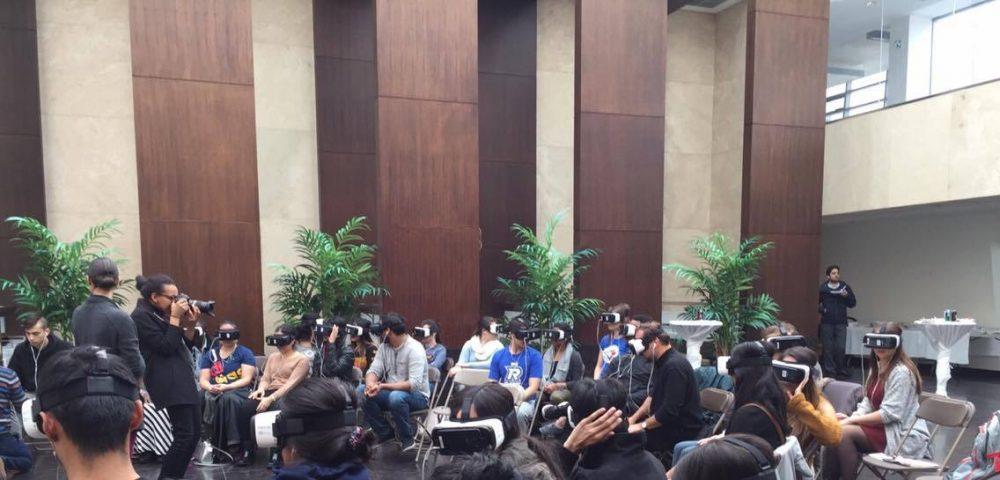By Olivia Bednar
Today, with a virtual reality (VR) headset, I was transported to a Zaatari refugee camp in Jordan.
Families in the camp around me are eating, living and learning in tents and immediately I am immersed in the story of a 12-year-old named *Sidra, who is standing right in front of me.
At the Clouds over Sidra screening, hosted by World University Service Canada (WUSC) at Ryerson, virtual reality goggles were used to simulate the world of a 12-year-old girl named Sidra and her experience in a Syrian refugee camp in Jordan.
Most of the attendees were experiencing VR for the first time and many were impressed with the experience.
“I think [virtual reality] is definitely more of a visual, participatory aid so it’s more inviting and inspires me to get more involved,” fourth-year nursing student Yoditt Getachew said.
The video starts out by Sidra sitting on her small bed in her bare room, telling viewers about her life.
Attendees are then taken to the refugee school which takes place in a tent. As the viewer moves their head, it pans over all the students eagerly raising their hands with homework answers—they’re excited about learning.
Sidra then guides viewers through the computer room, gym and the soccer field, where all the refugee children are playing games.
It feels like participants are hovering over Sidra’s family as they share bread under a tented roof.
“There are more kids in Zaatari than adults right now.” The exact statistic: 56 per cent of the camp are under the age of 18.
At this point, everyone must be thinking ‘Would my tears ruin the technology?’
“I think what [VR] does the most is stimulate people’s curiosity,” Fatima Saher, vice chair of WUSC Ryerson said. “For those who have no idea what life in a refugee camp is like, I think it does a really good job at providing a window to look through,”
The WUSC also hosts the student refugee program and this event was a big part of bringing awareness to that as well. Every year, the WUSC sponsors two refugee students from camps and brings them to Ryerson on a scholarship program.
“It’s so different than just hearing all these numbers and statistics,” Adela Zyfi, director of student refugee program, said. [Virtual reality] gives you a very personal perspective and it makes you actually feel like you want to do something about it because you actually see the reality of how they are living.”
The (Virtual) Reality of a Refugee Experience was the first collaboration project for the WUSC. The Sidra Project has screened their virtual reality experience in many places including Union Station, Pearson Airport, and other schools. They hope to expand their audience and continue to raise awareness.
*A previous version of this story says that the VR simulation was seen through the eyes of Sidra, however the story was told through Sidra’s narration and viewers saw her throughout the film. The Eyeopener regrets this error.











Leave a Reply